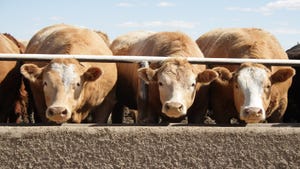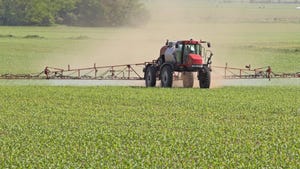
Record water usage and a lingering drought this year could mean water shortages in 2012 for Lower Rio Grande Valley farmers.Record amounts of water were used last year to the point that growers will likely face rationing in 2012.Growers need to decide cropping options and acreage with irrigation capacity in mind.
December 28, 2011

Record water usage and a lingering drought this year could mean water shortages in 2012 for Lower Rio Grande Valley farmers, according to Dr. Juan Enciso, a Texas AgriLife Research water engineer at the Texas AgriLife Research and Extension Center at Weslaco.
“It’s ironic that in 2010, South Texas was in danger of Katrina-like flooding, and now we’re looking at limited irrigation in 2012, unless weather patterns change drastically,” Enciso said.
The Valley’s flood control system barely withstood the massive floodwaters brought on by Hurricane Alex, which made landfall in northern Mexico in late June, followed by a rainy tropical depression, Enciso said.
“The good news was that the rain events of 2010 filled our reservoirs behind Falcon and Amistad dams,” he said. “Unfortunately, that was followed by a severe drought in both Texas and Mexico this year, one of the driest ever. Record amounts of water were used to the point that growers will likely face rationing in 2012.” Agriculture in South Texas used more than 1 million acre feet of water this year compared to only 519,000 acre feet in 2010, Enciso said.
Total water use, which includes municipal use, was about 1.4 million acre feet this year, compared to only 731,000 acre feet in 2010.
“Drought is a double-edged sword,” Enciso said. “It causes us to pull more water from our reservoirs than normal, while not replacing that water with inflows from the watershed, either in Texas or Mexico.”
Of the 28 water districts in the Rio Grande Valley, some have started warning growers that water may run short next year if irrigation demands remain high. Allocations, or rationing, could begin at some point next year, Enciso said. “If growers are allocated only a few irrigations, about 6 to 8 inches of water, it’s important for them to start making planting decisions now,” he said. “They’ll have to decide what to plant since some crops require more water than others, and they’ll have to decide how much of their acreage they’ll plant.”
Crops require varying amounts of irrigation, depending on the cultivar, among other variables.
“Corn, for example, requires four to five irrigations, sugarcane seven to 10, grain sorghum only one or two and cotton requires three,” he said. Having fewer than the required number of irrigations makes their timing critical.
“All crops require preplant irrigations to help the plants establish themselves, and irrigating after a plant reaches physiological maturity won’t increase yields, so it’s important to know when in a plant’s life cycle to deliver available irrigations, something I’ve plotted on a PowerPoint presentation,” he said.
A cotton field with four irrigations, for example, should be delivered at preplant stage, at first white bloom, at peak bloom and just before the first open boll, Enciso said.“Fortunately, there has been a great increase in the number of Valley growers who use improved methods of irrigation,” he said. “Many growers now level their land and use poly-pipe to irrigate furrows blocked at the end to prevent runoff. They may irrigate only every other row, or use surge irrigation to apply lighter irrigations with higher frequencies.”
Enciso also said he is working with irrigation districts to set up a series of weather stations throughout the Valley to help growers calculate water requirements of crops.
“These weather stations are state-of-the-art and gather weather information constantly to inform growers via the Internet. They monitor wind, temperature, relative humidity, rainfall, solar radiation or heat units for each crop and evapotranspiration.”Without inflows from rivers in Mexico to U.S. dams, Enciso said the dams contain enough water for one year, just over 1 million acre feet.
“Municipal water is secure and will always be a priority over water for agricultural uses,” Enciso said, “But it’s always important, drought or no drought, that growers have and use every tool available to better manage their water use.”
You May Also Like



